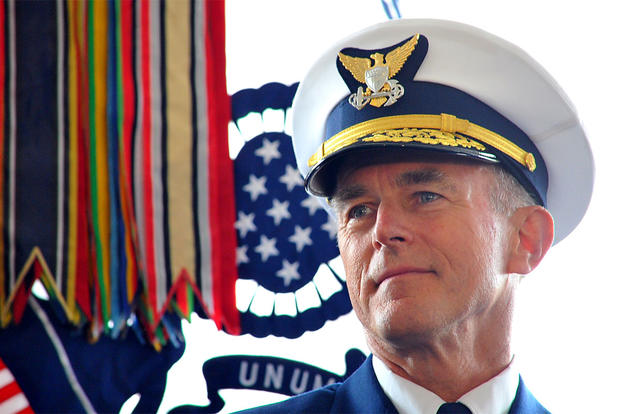The commandant of the U.S. Coast Guard made his case Wednesday why the Coast Guard needed to make an investment in drone technology just as much as the military services.
U.S. Coast Guard Commandant Adm. Paul Zukunft said there is any number of reasons that drones will be a regular tool for the Coast Guard, telling a group at the National Press Club in Washington, D.C., that "we've only seen – no pun intended – the tip of the iceberg."
"We're the only entity that has – really – a unique compendium of authorities outside of 12 miles of U.S. waters, which is the high seas," Zukunft said. "We have over 65 agreements that deal with counter drug [operations], that deal with proliferation security, that deal with fisheries regulation."
Drones could play a role in any of those missions, he said.
Related Video
Among vessels with drone assets is the Coast Guard Cutter Healy, the service's newest and most technologically advanced icebreaker. The cutter has used Aeryon Scout drones mounted with remote sensors to help find the easiest areas to break through. They have also flown the drones using thermal imagery to detect mammal activities in order to avoid disturbing them, Zukunft said.
"It's much easier to use drone technology ... sometimes [in] marginal weather that would otherwise put human beings at risk," he said. "They can do the exact same thing and do it persistently."
The Coast Guard also has used drones for high seas drug busts.
In one instance, he said, a Coast Guard National Security Cutter launched a drone and found a refueling vessel waiting to fuel up a "go-fast" – a speed boat used to race millions of dollars' worth of cocaine to U.S. shores.
"Instead of charging over the horizon [after the refueling vessel] ... they stalked this thing for 36 hours" by drone," Zukunft said. "As soon as the go-fast showed up they brought the drone back, then they launched the orange helicopters, shot out the outboards and we got several tons of cocaine out of that."
None of that would be possible without drone technology, he said.
Given the size of the Coast Guard, with about 43,000 full-time active duty personnel and a mission to provide coastal security and law enforcement without and beyond U.S. waters, including operations in the Arctic and Antarctic and deployed overseas, as well, the service needs every technological edge, according to Zukunft.
"Organized crime is a $750 billion industry," he said. "So I'm going after that with a $10 billion budget."
-- Bryant Jordan can be reached at bryant.jordan@military.com





























